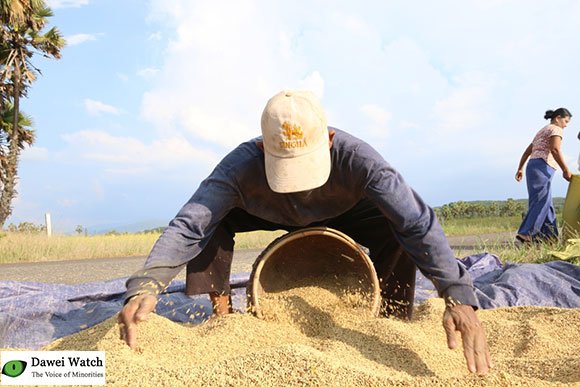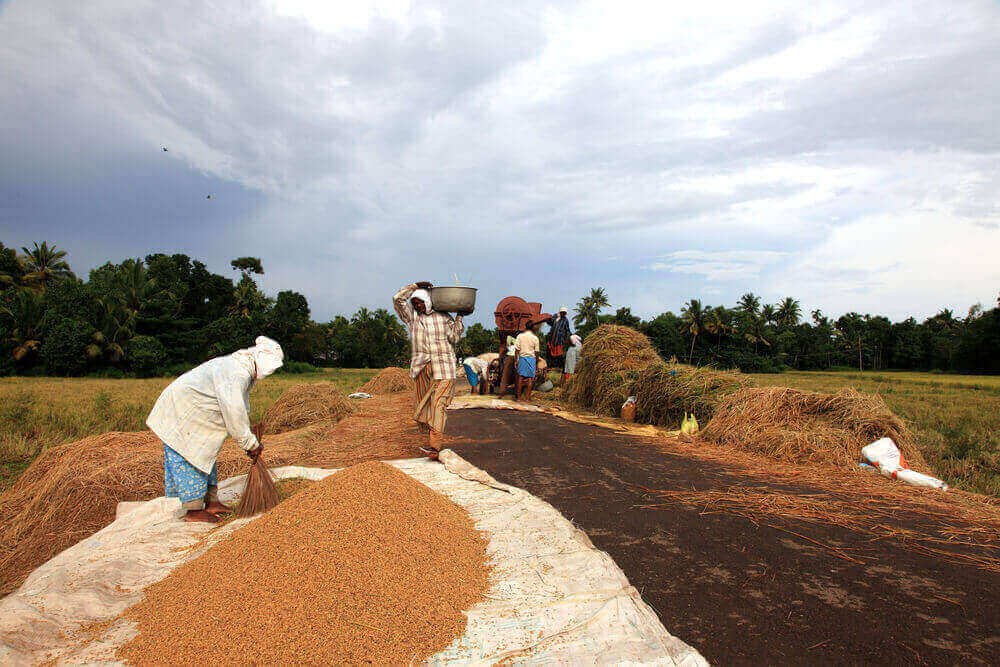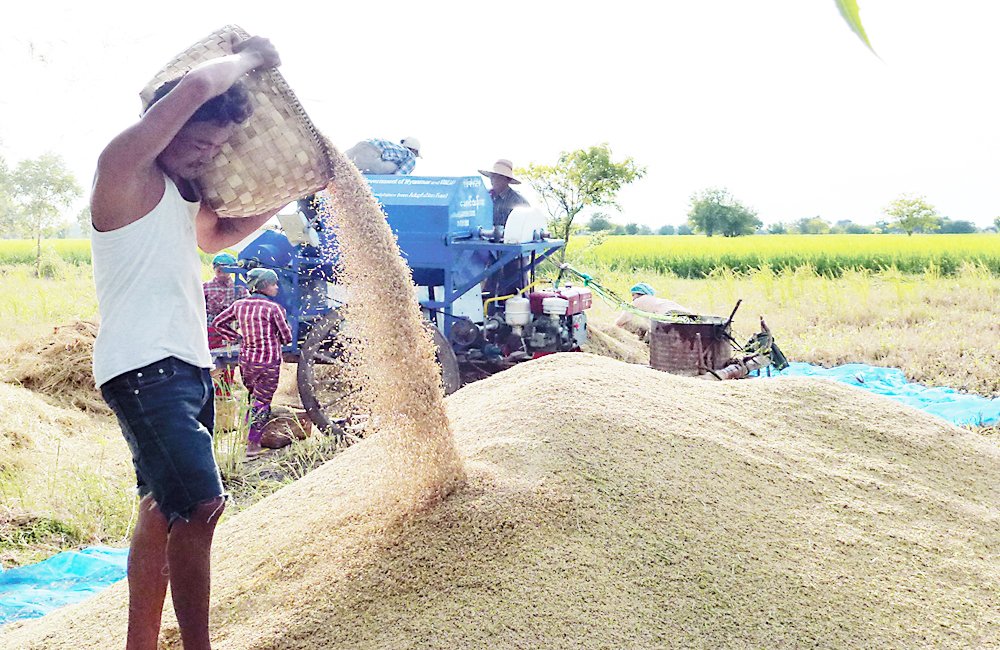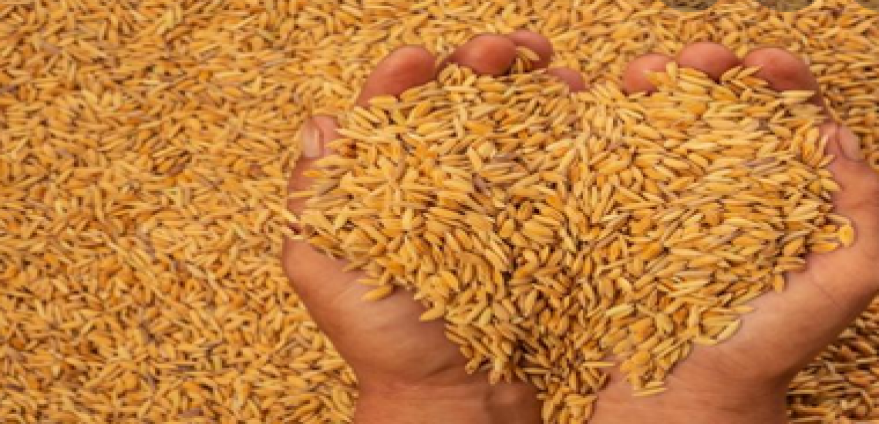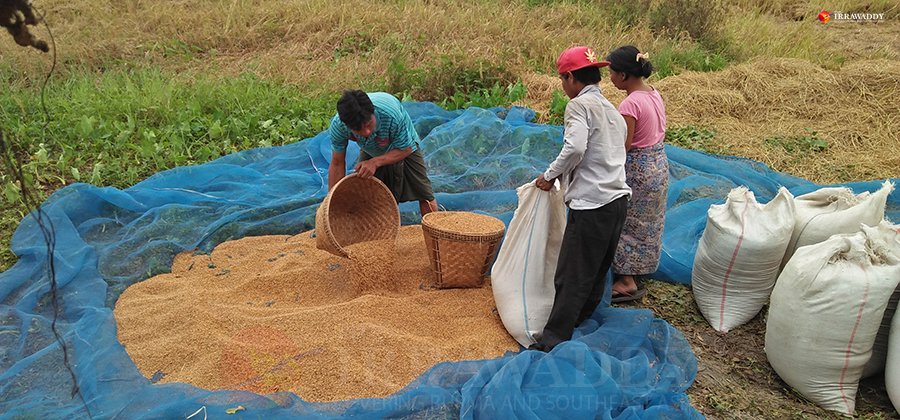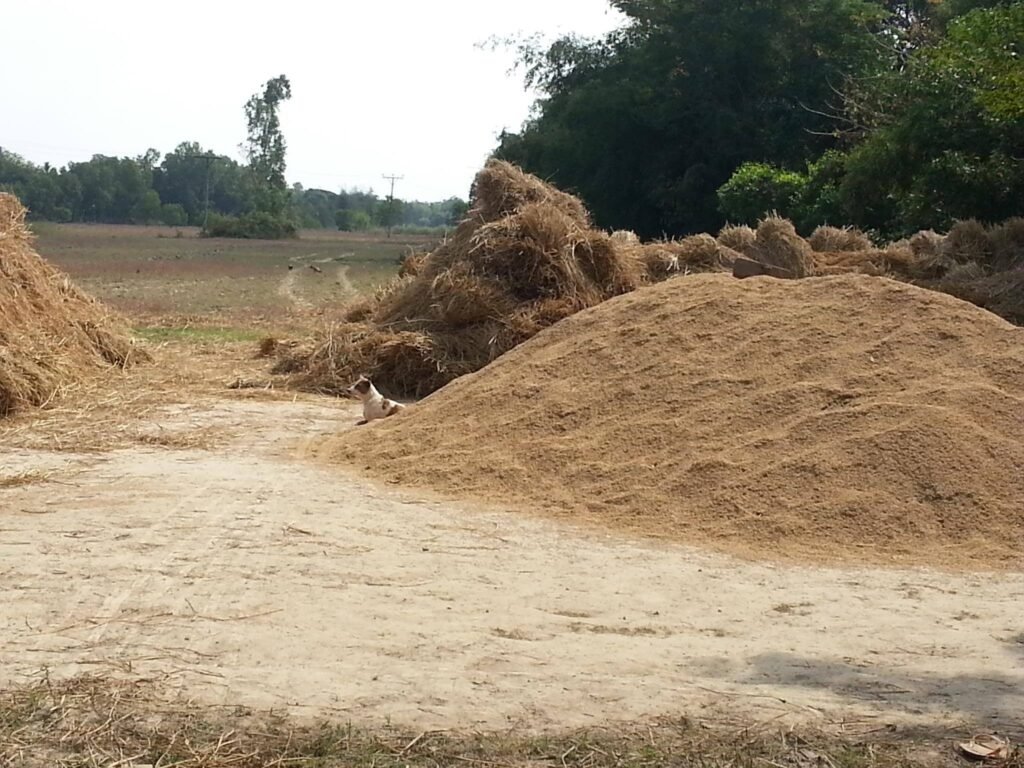Rice Winnowing (separating Rice From Chaff)
Rice winnowing, known in Myanmar as is an essential step in the traditional rice farming process, performed after the rice has been harvested and threshed. This process involves separating the clean, heavy rice grains from unwanted materials such as chaff, straw, husks, dust, and small debris. It is a critical task that ensures only quality rice is kept for storage or consumption. The winnowing process usually takes place outdoors in an open area where there is a steady breeze. Farmers pour dried, threshed rice from a height using a woven bamboo tray or basket, allowing the wind to blow away the lighter materials while the heavier rice grains fall directly to the ground. This method is simple but effective, relying on natural wind or manual fanning. Rice winnowing is not only a practical task but also a communal activity. Family members and neighbors often join together to complete the work, strengthening community bonds. For Mon farmers and others across Myanmar, this stage marks the final step before rice is stored.
Rice Winnowing Process
After the rice is harvested, the traditional post-harvest process begins with threshing, where rice stalks are beaten or trampled to separate the grains from the straw. Next, the grains undergo drying, typically by spreading them out under the sun to remove excess moisture and prevent spoilage. Once dried, the rice is cleaned through winnowing, a technique where the grains are poured from a height or tossed in a shallow basket, allowing the wind or a fan to blow away lighter materials like chaff, dust, and husks, while the heavier grains fall straight down for collection. Finally, the cleaned rice is stored in traditional granaries or sacks, ensuring it remains safe and dry for future use.

Store house
After cleaning, rice is stored in traditional granaries made of bamboo or wood, or in sacks kept in dry, well-ventilated places. Proper storage protects rice from pests and moisture, ensuring it lasts for months. This step is essential for food security and sustainability in traditional Mon farming communities.
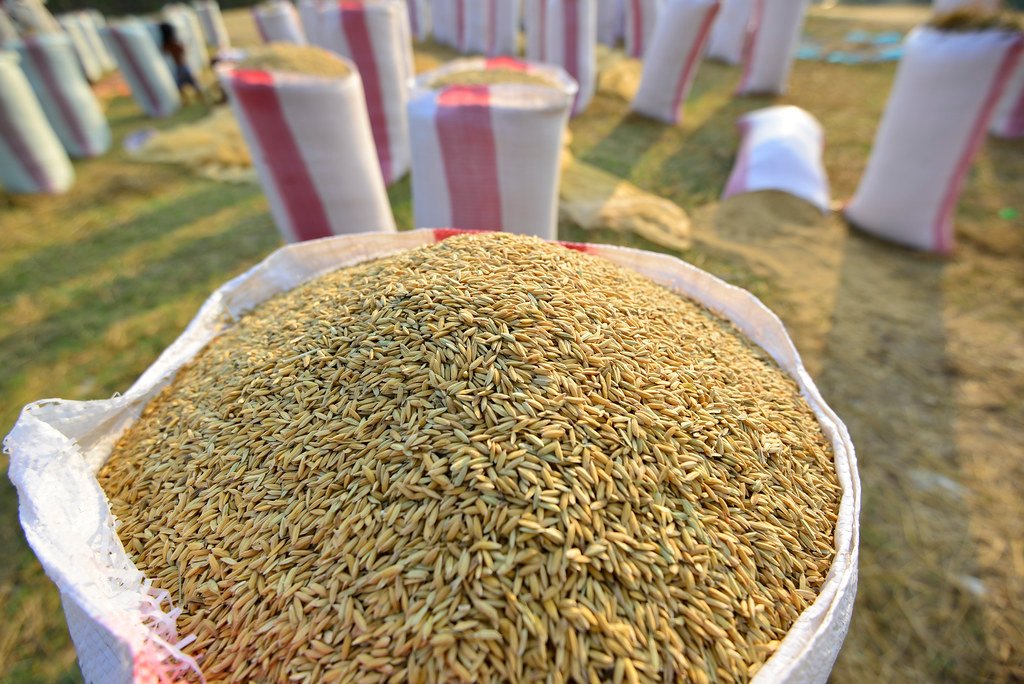
Gallery Activity
